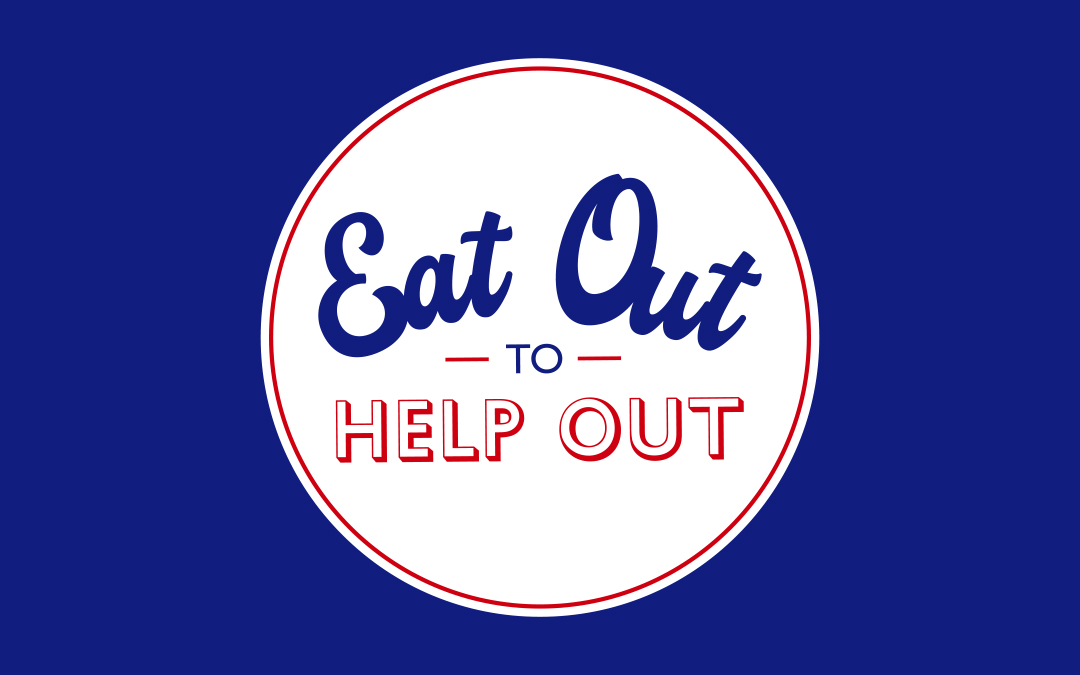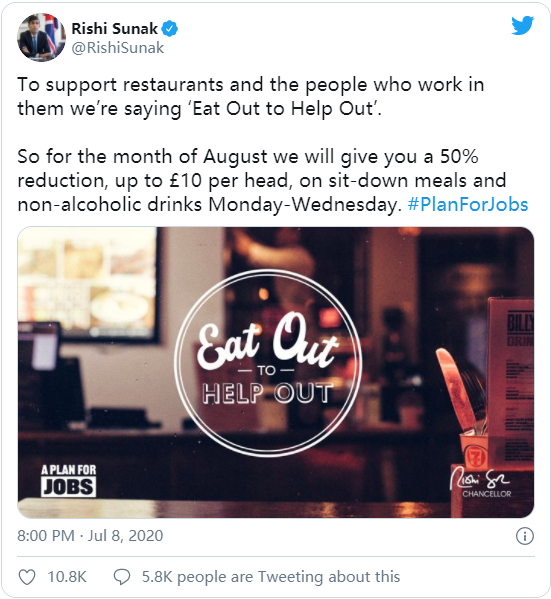
Eat Out to help out: UK diners treated to half-price meals.
On July 8th, the UK Chancellor Rishi Sunak announced a new initiative to help restaurants, pubs, and cafes after the pandemic. These businesses within the hospitality sector have had a serious financial hit due to being unable to open during the lockdown in the UK, therefore the government wants to encourage more people to eat out and use such businesses in a step to re-build the economy again.

The ‘Eat Out To Help Out’ scheme was launched as part of the U.K.’s latest £30 billion stimulus package to encourage growth post-lockdown. The discount is only valid from Mondays to Wednesdays through August. Also, the offer applies to dine-in meals only. And, while it can be redeemed at a gastropub, the voucher does not cover the price of alcohol—making the discount nearly complicated.
Check which chain restaurants have registered for the Eat Out to Help Out Scheme: https://www.tax.service.gov.uk/eat-out-to-help-out/find-a-restaurant
HMRC said that, as of 9 August, it had received 10,540,394 claims under the scheme.

Even so, the launch of the half-price meal is undoubtedly still making people happy. Some people seem to turn restaurants into their own to eat all they want. From half-price burgers and coffee in the morning to half-price steaks and cokes at noon and half-price salads and chicken at night.
However, after a week of half-price meals, there are still some areas where the food market is tepid. In London’s heavily traffic-filled Waterloo Station Hall, several chains that have joined the “half-price meal” scheme are almost empty at lunchtime. More passengers still choose not to take advantage of the “Eat out to help out”. They brought their own dry food and drinking water, quietly finish their lunch.
“Why not spend at a discount?” At the train station, Bernard, an 40 years old investment adviser on business in London, said the main reason not to the restaurant is to avoid contagious Coronavirus. Like many of his colleagues, he said, he still works mostly at home, hardly spending time and eating outsides.
According to the survey, only a third of Britons admitted to returning to work from the lockdown from March till it was lifted in June. And again in August when they were at risk of the epidemic. The risk of coronavirus creates uncertainty. And for restaurants, it’s also not clear how much to prepare to cover their costs. It also puts a strain on the restaurant’s operations.



